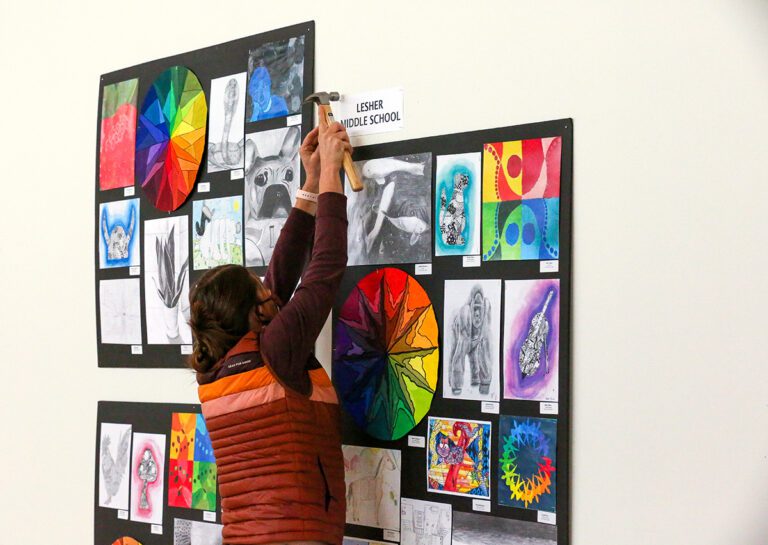A few years ago, in an effort to bolster excitement in the arts, the specialist team and I designed and created an “Arts Night” for parents and students. What started as a simple idea one morning in our PLC meeting, quickly spiraled into what is now a building tradition. Everyone played a role in developing this event, which is why it was so successful and my principal was very supportive as well.
In a nutshell, here is what to do.
1. Decide on a grade level.
We selected 3rd grade because this grade seemed to have less school events and performances than the other grades. We checked the district schedule to make sure there wasn’t another activity scheduled for the same time (girl scouts, basketball, chess club, etc.)
2. Create a schedule.
Parents are not going to want to be at school for hours on end, especially after a long day at work. In order to keep the event moving, we came up with the schedule listed below. We met in the library briefly to give introductions and pass out the schedules. Our principal signaled transitions between classrooms via the speaker system and we wrapped up in the library for a story and treats.

3. Design your curriculum.
Each subject designed a 20 minute mini-lesson that touched on program highlights, gave students a chance to demonstrate their learning and involved parents. My mini-lesson focused on printmaking. We used Styrofoam plates that students had created in class. I presented a quick PowerPoint presentation followed by time for students to teach their parents how to print. Students used white ink on black paper that they would add color to the next class period, so there was only one ink color and one paper color to choose from. Keep it simple!

4. Market your event.
We sent home flyers and talked to students in class to prepare them for the upcoming “Arts Night.” The event was on the school calendar, classroom and specialist web pages, and on the school announcements. I would recommend including an RSVP portion on the flyer to make sure the information was received and increase accountability. Also, consider how you want to address siblings. We politely made it clear that “Arts Night” was intended for 3rd graders only and that no child care would be provided. Depending on the climate of your school, you could try a family night or have older students provide child care instead.
5. Enjoy!
This was truly a wonderful experience. I happened to be at a brand new school the year we piloted “Arts Night” and it was fun to help develop a positive and open school culture. Inviting parents into your classroom and demonstrating learning is an invaluable advocacy piece for your program. The “buzzing” excitement from your students is translated to their parents and beyond!
I know many of you host something similar.
What tips do you have for creating a successful night?
Magazine articles and podcasts are opinions of professional education contributors and do not necessarily represent the position of the Art of Education University (AOEU) or its academic offerings. Contributors use terms in the way they are most often talked about in the scope of their educational experiences.




